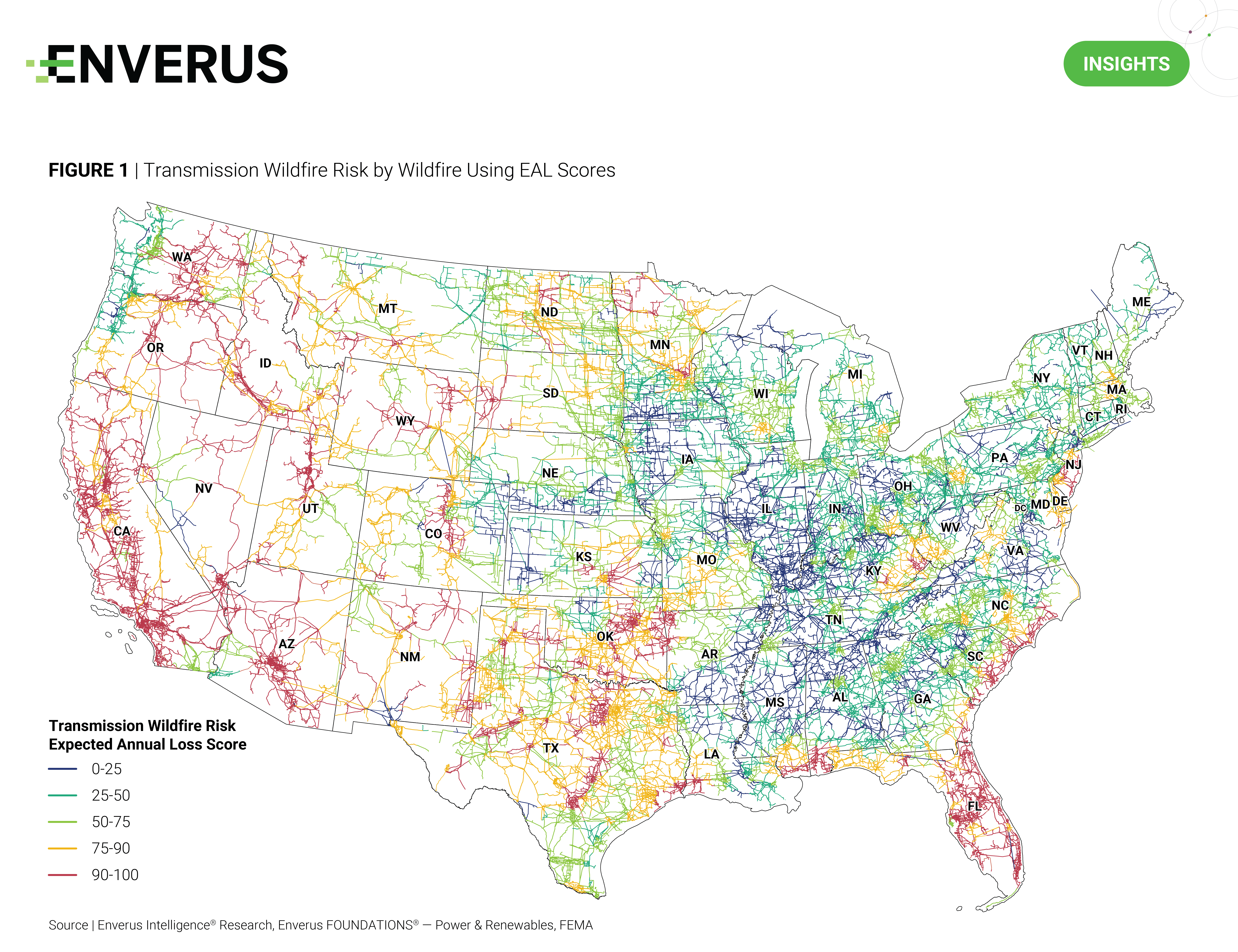
Wildfires around the world cause billions in damages annually and are becoming more widespread, burning almost double the tree cover than two decades ago. One contributing factor to these wildfires are transmission lines, which often pass through higher-risk mountainous or forested regions and can spark fires. Enverus Intelligence® Research (EIR) analyzes wildfire risk levels across the U.S. transmission network, as well as which transmission owners are the most at risk.
Wildfire risk can be quantified through wildfire expected annual loss (EAL) scores, which have been associated to all operating transmission lines in the U.S. This represents the average loss to buildings, population and/or agriculture through a score ranging from 0 to 100. This map shows that the West region, Texas, Florida, and the Carolinas have the highest wildfire risk to their transmission lines, mainly due to factors that contribute to possible droughts and hurricanes, as well as a growing population and an aging infrastructure. Notably, California features Inverse Condemnation, a legal doctrine which allows the state to hold utilities companies liable for wildfire damages caused by their infrastructure. Recently, EIX has been named in a lawsuit where their transmission infrastructure allegedly caused the deadly Eaton fire in Los Angeles. Leveraging Enverus PRISM®, it’s observed that all EIX’s transmission lines are scored as highest wildfire risk. There are six utilities exposed to Inverse Condemnation with high wildfire EAL scores – SMUD, SDG&E, EIX, PG&E, LADWP and IID.
About Enverus Intelligence®| Research
Enverus Intelligence® | Research, Inc. (EIR) is a subsidiary of Enverus that publishes energy-sector research focused on the oil, natural gas, power and renewable industries. EIR publishes reports including asset and company valuations, resource assessments, technical evaluations, and macro-economic forecasts and helps make intelligent connections for energy industry participants, service companies, and capital providers worldwide. See additional disclosures here.
